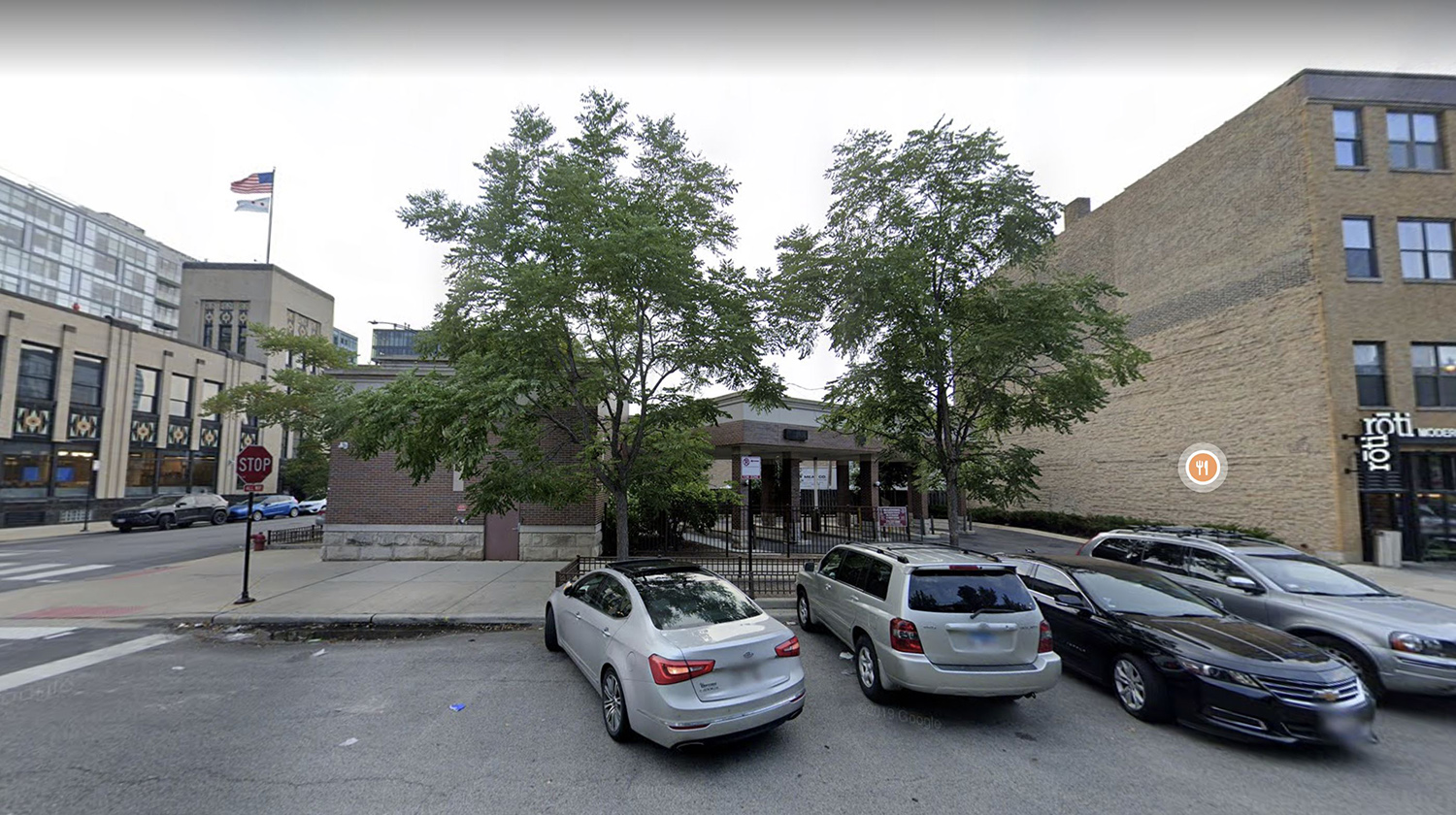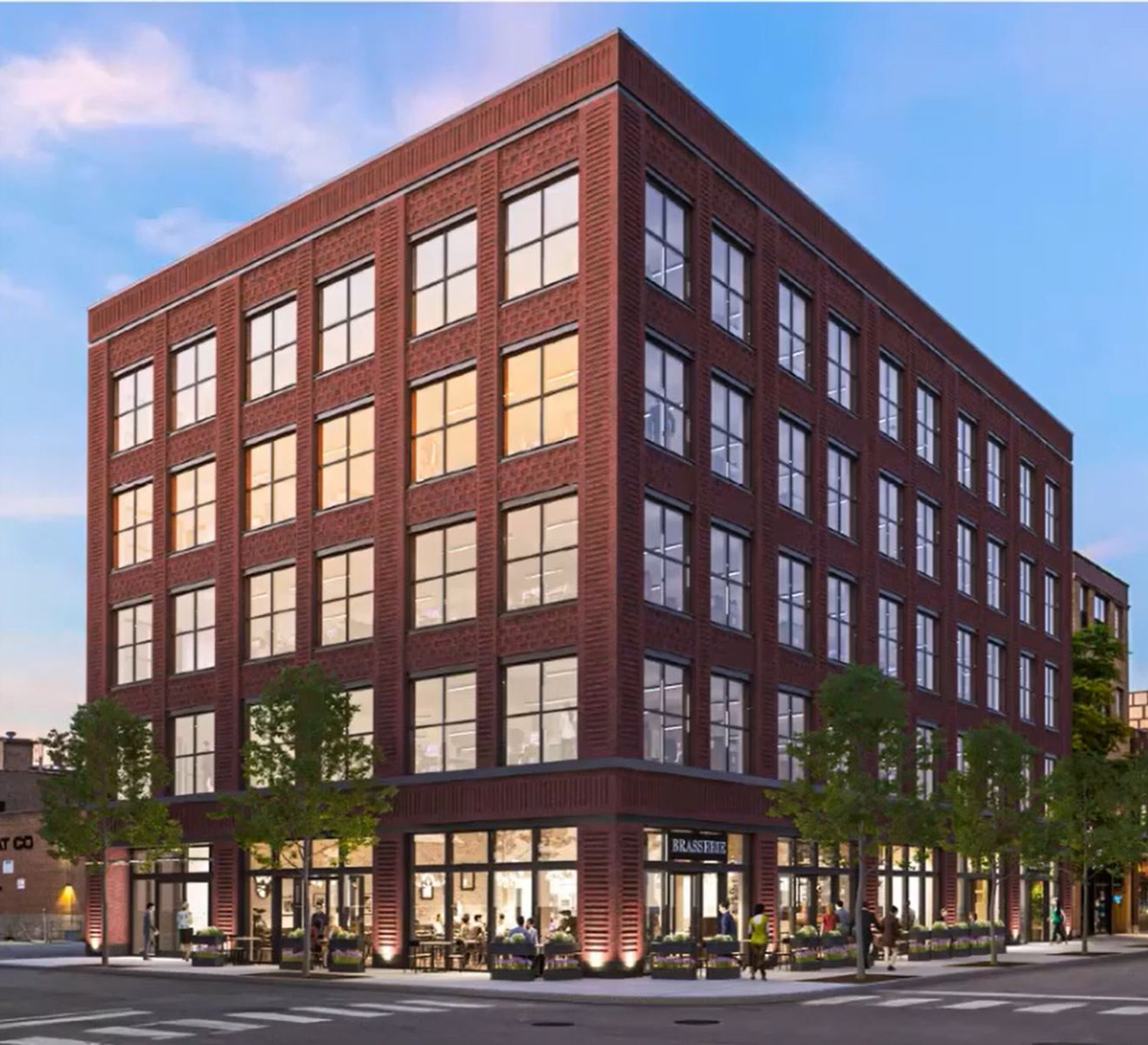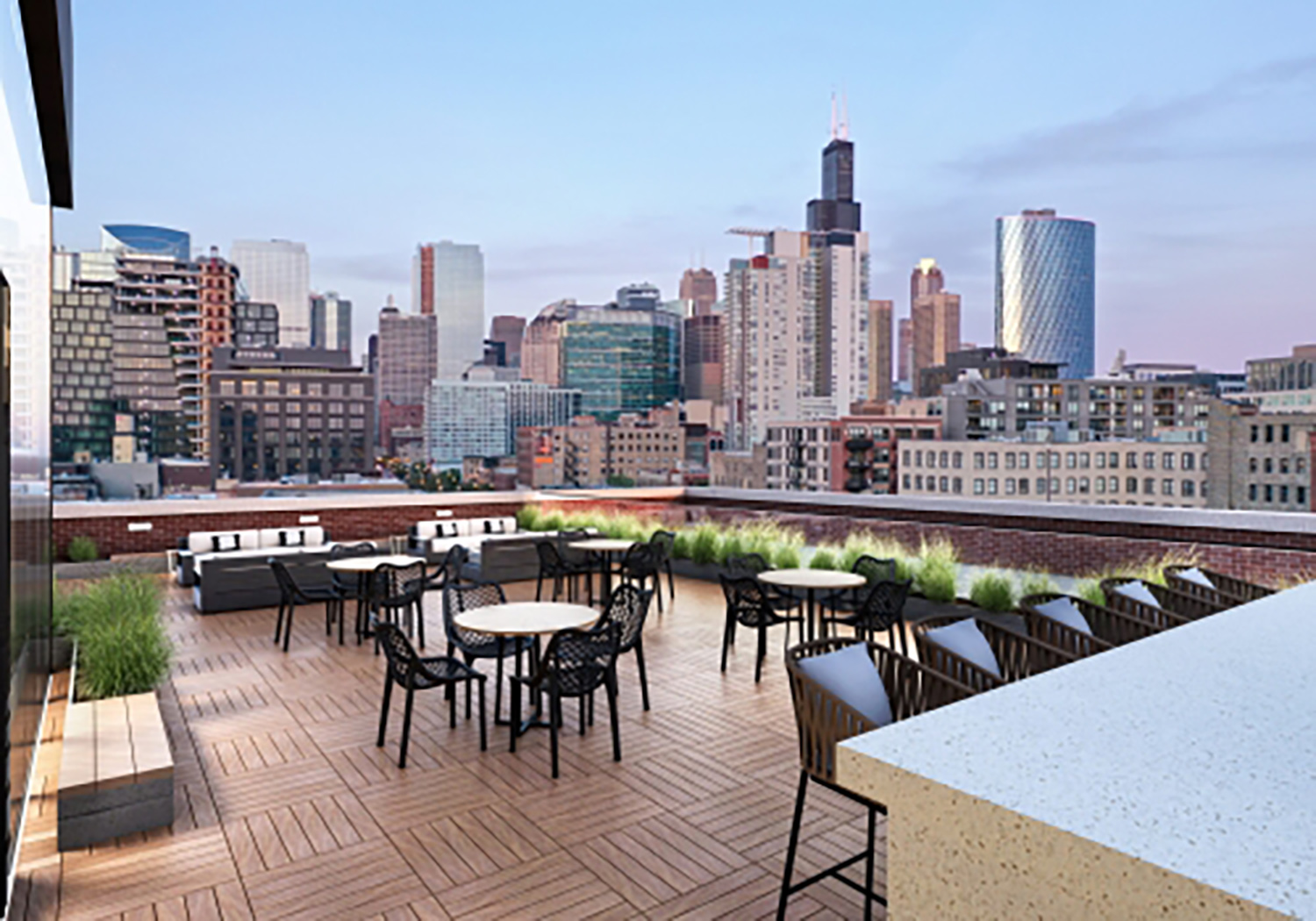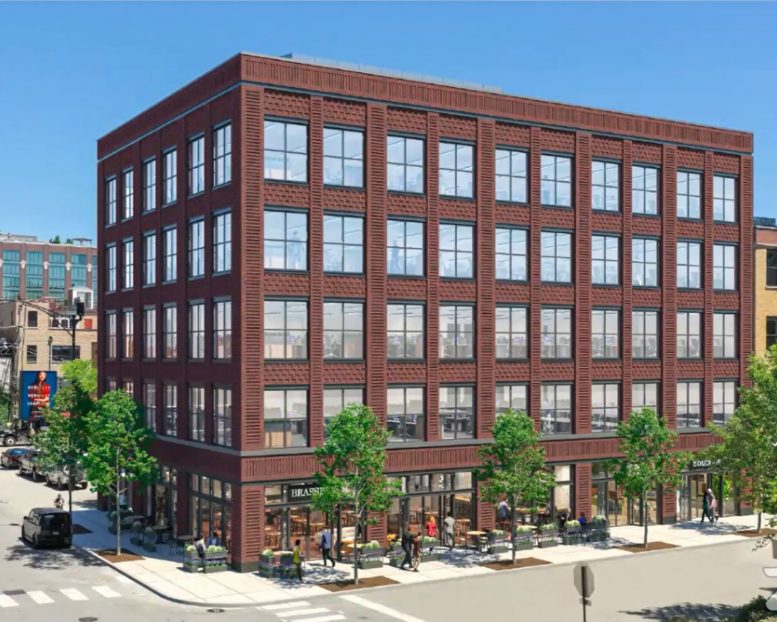The Chicago City Council has given the final approval for demolition of the existing structure at 1020 W Randolph Street in the West Loop. Located within Fulton-Randolph Market District, and the northeast corner of W Randolph Street and N Carpenter Street, the current site conditions consist of an existing one-story bank with drive-through that is the subject of this demolition approval. L3 Capital is the developer behind the project.

1020 W Randolph Street via Google Maps
The existing building, built in 2003, was approved for demolition by the Commission on Chicago Landmarks in December 2020. The structure was deemed non-contributing to the historic district and its demolition won’t have an adverse effect on the district.

View of 1020 W Randolph Street. Rendering by Hartshorne Plunkard Architecture
Designed by Hartshorne Plunkard Architecture, the new construction will be a five-story mixed-use building that rises 69 feet, and holds retail and office space. The design features zero lot lines to reinforce and reinstate the historic street wall that was broken by this bank building and drive through. The project will feature alternating widths of vertical masonry piers that organize the facade. The wider peers extend to the ground and terminate at granite bases. These peers define the storefront bays on the ground floor. Storefronts will include vertical aluminum mullions and substantial horizontal mullions that divide the upper storefront into transom windows.

Interior View of 1020 W Randolph Street. Rendering by Hartshorne Plunkard Architecture
A cast stone band runs above the first floor that visually divides it from floors above. Upper floors are divided by patterned brick spandrels, where the design uses varying patterns and orientations of brick that acknowledge the level of detail and variety found in historic buildings within the district. These brick patterns inset and project as part of the design. Aluminum mullioned windows used on the upper floors are contemporary but similar to double-hung windows in the district. Metal channels will act as lintels and sills on all windows of the building.

Interior View of 1020 W Randolph Street. Rendering by Hartshorne Plunkard Architecture
The Morgan CTA L station, serviced by the Green and Pink Lines, is a three-minute walk from the site. The nearest bus route is the 20 CTA route, accessed at the Madison and Aberdeen stop, which can be reached within via a five-minute walk from the site.

Rooftop Deck at 1020 W Randolph Street. Rendering by Hartshorne Plunkard Architecture
With landmarks and city council approval, the demolition permit should be approved soon. Construction of the new building is expected to commence once demolition has been completed. The development is expected to be completed in 2022.
Subscribe to YIMBY’s daily e-mail
Follow YIMBYgram for real-time photo updates
Like YIMBY on Facebook
Follow YIMBY’s Twitter for the latest in YIMBYnews


I’m just happy to see the demise of that dreadful suburban-style bank. This will be a fine addition to the area.
Agreed, very nice. I wish Chicago would do more of this kind of thing, not everything has to be super flashy, just fitting well within the existing context without doing these massive highrises with massive, street-life-killing parking podiums. These cozy, well-scaled buildings do wonders for making our streets and neighborhoods more inviting.
There’s no reason all the good points you laid out about this human scaled addition couldn’t be accomplished with a 20 story building. Chicago just doesn’t mandate or encourage high quality urbanism that would begin to produce similar results on “massive” towers. Built-environments reflect a city’s zoning policies and ambitions. For a city of our magnitude one would think that they’d drop the suburban accommodations, under-scaled buildings and tolerance of bland design.
Dare I say this, but this building is a perfect example of what filler should look like in Chicago- Nice details, fits with the neighborhood, not flashy. More please!
Wow, this is a legitimately good building.
Didn’t think HPA had it in them, bravo.